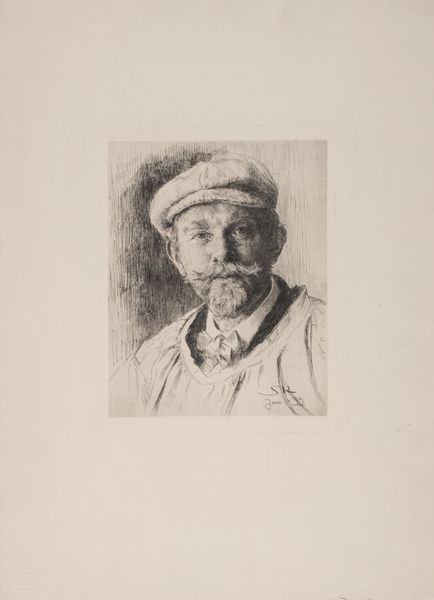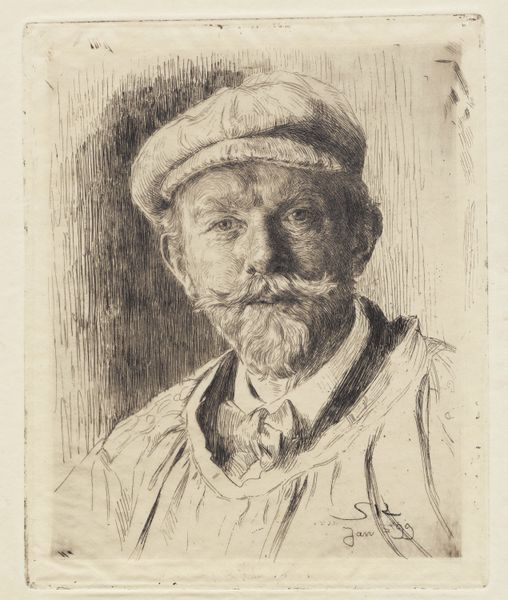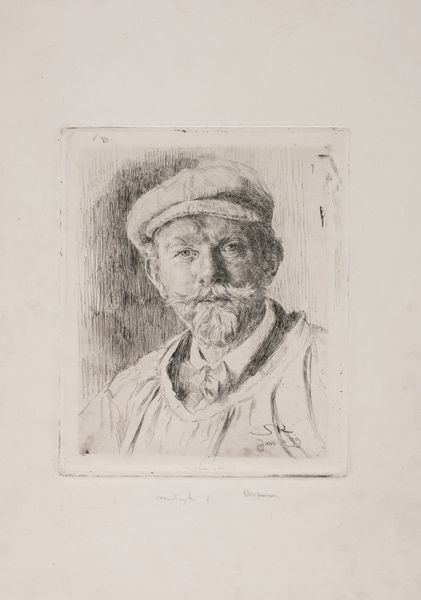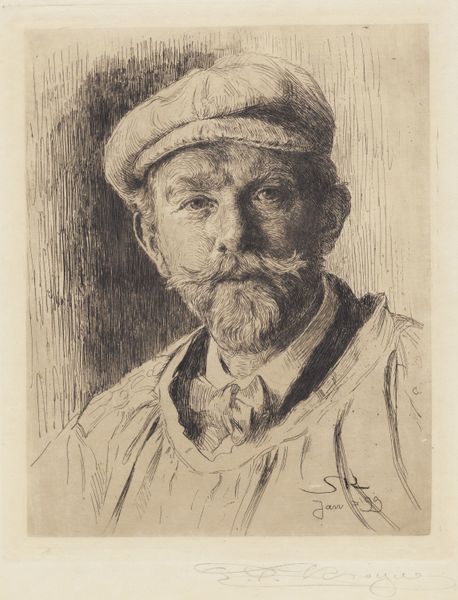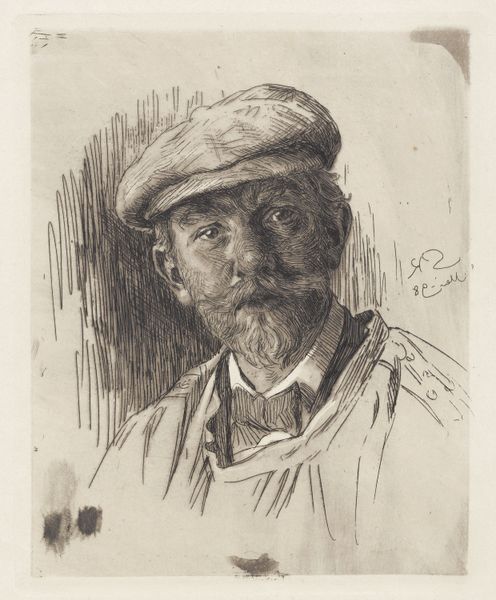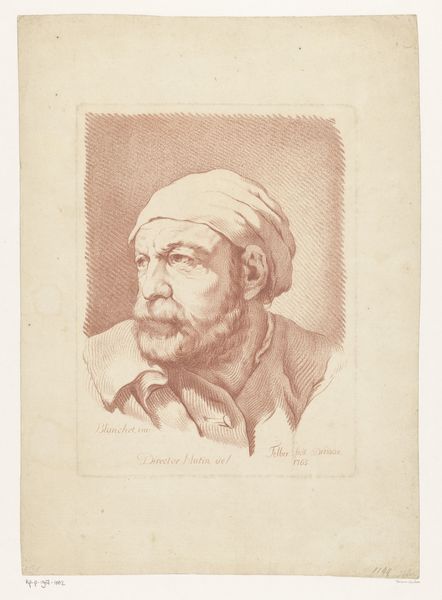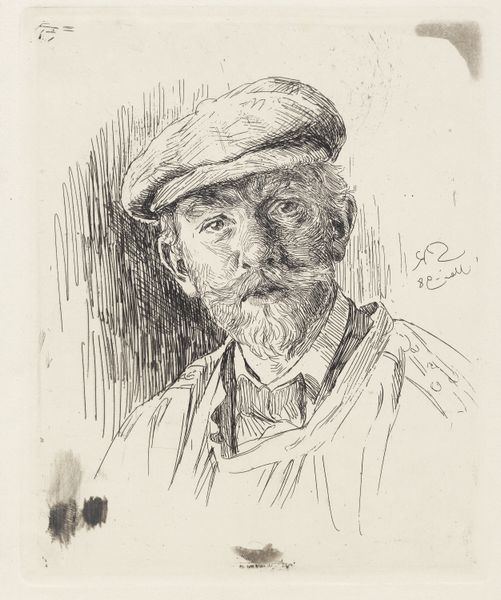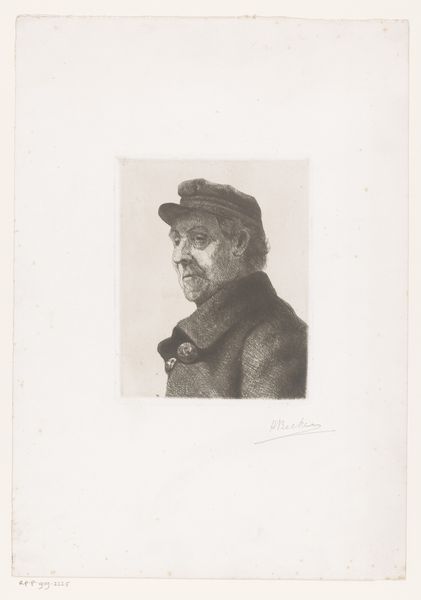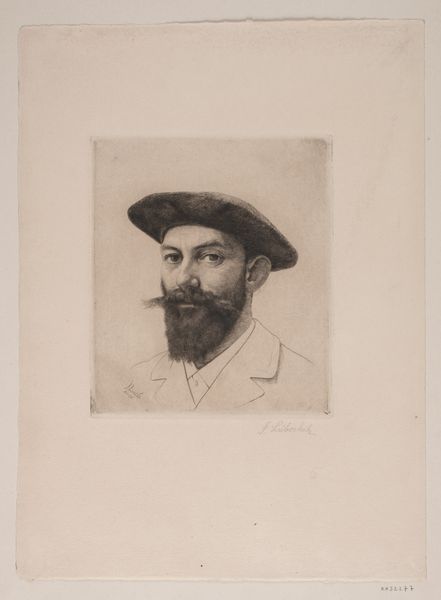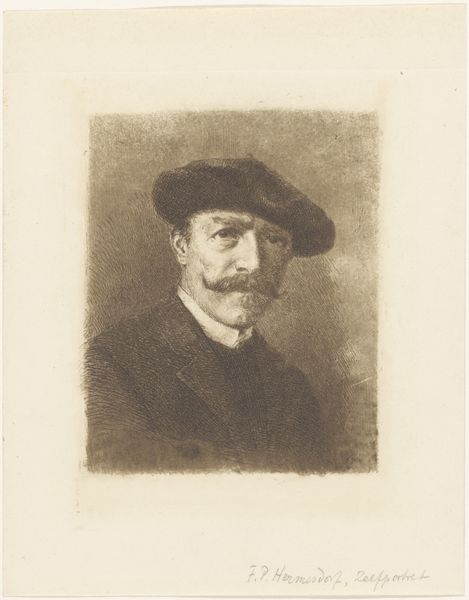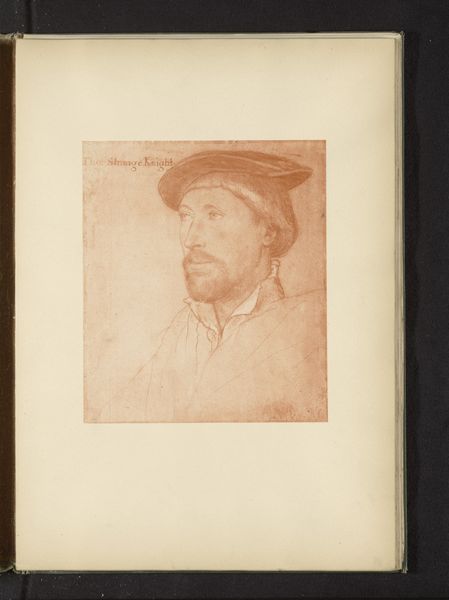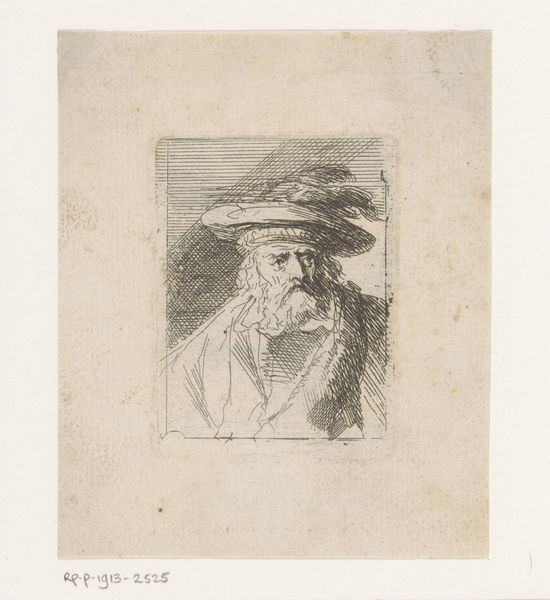
Dimensions: 223 mm (height) x 185 mm (width) (bladmaal)
Curator: Up next, we have P.S. Krøyer’s self-portrait from 1899. What's your initial take on this one? Editor: It has a rather introspective quality, doesn’t it? The hatching and cross-hatching create a somber, almost melancholic mood. The cap, mustache and his piercing stare all suggest a self-assured yet vulnerable artist. Curator: Indeed. It's an etching, using ink on paper, and if you look closely, you can see the lines he used to build up the form. Krøyer was a key figure in the Skagen Painters group. His process, utilizing etching, allowed for reproducibility, making art accessible beyond the elite. How do you think this medium impacts its reception? Editor: Mass reproduction absolutely shifts the social role of the artwork. Etchings democratize images, circulating Krøyer's likeness beyond the gallery walls and potentially shaping his public persona. It moves art closer to craft in a way. How do you think that idea might relate to Krøyer's other, more celebrated, works? Curator: Good point. Consider his seascapes: paintings deeply concerned with the labor and material interactions between people, boats, and the ocean. This self-portrait shares that sensibility in its attention to line and detail, almost a workmanlike rendering of his own face, in a style influenced by impressionism, but grounded in careful, repetitive action. It speaks to a democratization of portraiture, much as the Impressionists challenged the Academy. Editor: Precisely! His other work often depicts fishermen and working-class figures, hinting at an interest in portraying various segments of society. So the choice of etching amplifies this intention through its accessibility, furthering a move towards egalitarian imagery. I wonder if this accessibility was perceived in its time and affected Krøyer's social standing as a result? Curator: Interesting to consider. Overall, it seems like the materiality and method speak volumes about Krøyer’s place in the broader artistic and social context of his time, creating access points and encouraging discussion. Editor: And examining those lines, cross-hatching, and the possibilities for circulation, also lets us engage in questions of image-making in relation to cultural memory today.
Comments
No comments
Be the first to comment and join the conversation on the ultimate creative platform.
